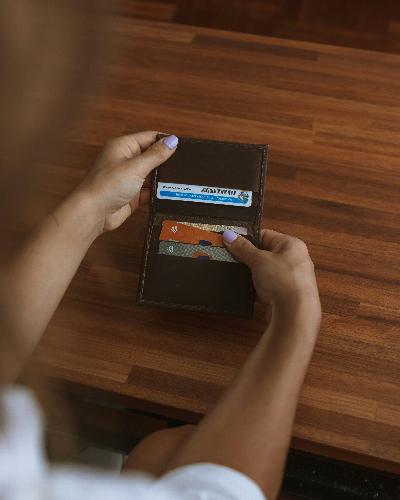Whether for personal use or through an organisation, credit cards present us with a range of benefits when compared to alternative methods of payment. The launch of the first recognisable credit card, in the modern sense of the word, came about in 1958 with the arrival of the Bank of America's “BankAmericard”. The first to break into the mass market, overcoming the considerable hurdle of generating enough simultaneous demand in both consumer and merchant markets, as to maintain reciprocal confidence and perceived value for both parties. Almost 70 years later, these inconspicuous pieces of rectangular plastic have weaved their way into the very fabric of our lives (and our pockets!) – offering the ultimate in convenience, flexibility, protection, personalisation and ancillary benefits.
Despite these obvious advantages, credit cards do require discipline, strong budgeting, and overall diligence on the part of the consumer. Mismanagement of any credit facility, especially a “revolving” one with high interest rates and short repayment terms can swiftly land the user in financial trouble. The very worst example being irreversible levels of spiralling debt, damage to credit scores and eventually, even bankruptcy.
However entrenched you may feel, and however hopeless the situation may seem, you have options. We've constructed this guide to not only communicate those options to you, but to provide structure and actionable steps to begin alleviating the daily stresses associated with credit card debt and, as the ultimate goal, paving the way to a debt-free future. Let's get into it.

Step 1: Acknowledge the situation
No, really acknowledge it. This can be the very hardest part of the entire process because you are no longer entertaining the coping mechanisms of burying your head in the sand or pushing your debts to the back of your mind. Spend some time gathering the information you require to understand the scale of the problem and focus on the inconvenience and detriment it's caused you until now. So you can ensure that it doesn't continue to impact your life, acknowledge its existence and establish an exact “state of play”. Quantify your liabilities to the penny. As of today, how much do you owe and by when? Facing the reality is your foundation for making your next decisions.
Step 2: Stop increasing your debts
From this point onwards, you must limit the damage as much as possible, and thankfully that is well within your control. As mentioned previously, credit cards offer us a “revolving line of credit”, allowing access to an available balance which varies depending on status and the lender. Rather than fixed term credit, like a bank loan, credit cards allow the user to make a “minimum repayment”, rather than demanding the balance repayment in full, with interest charged on the remaining amount owed. Over time, if this process is repeated with additional purchases and the balance never satisfied in full, you can quickly find yourself in the position of perpetually increasing balances due to accrued interest without a legitimate means of ever reducing or paying it off. Meanwhile, the minimum repayment creeps up and before you know it, even that becomes unachievable each month. In short – STOP spending on your credit card/s. Break the cycle, use your cash instead.
Step 3: Establish your debt budget
So far, you've acknowledged the existence and growth of credit card debt and agreed that it's time to take action. Not only that, but you've committed to yourself and your future by ensuring that the current liability is no longer compounded by additional spending – the most devastating effects have been stopped in their tracks. Great start! Now it's time to begin constructing a plan for your journey to repair and recovery. Commit even further to your future by developing the skill of meticulous budgeting. Once your debts are settled, it'll serve you fantastically with managing your personal finances for decades to come.
In the meantime, for the purpose of this guide and achieving your debt elimination goals, your budget should consist of a detailed spending plan for each month of the year. List all monthly income sources, then your recurring monthly expenses, and allocate funds accordingly. With the money left over, distribute a sustainable (yet significant) proportion of that towards paying off those credit card bills and a considered total towards personal spending on experiences and luxuries. Remember that now you've committed to ONLY spending your own cash balance, you must be absolutely devoted to your cause – do not exceed your budgeted spending limits.
Step 4: Prioritise and consolidate
You've standardised your total credit balance and ensured it's already reached its maximum, the best step from here is to continue this process of damage limitation. This is made possible by keeping your monthly repayments and total fees over time to an absolute minimum. Side note – in the event that you're only subject to debts from a single credit card, you are already in a favourable position where this topic is concerned. Please skip this section and move onto the next. For those battling with balances across multiple cards, please read on.
By creating a list in descending order of each of your credit cards, starting with the card with the highest interest rate (likely also demanding the highest monthly repayment figure) through to the card with the lowest, you can prioritise and subsequently proportion your funds to maximise your repayment efficiency. This will stem the flow of the worst influences on your cash flow in the short term, whilst also reducing your total cost of borrowing over time in that you are effectively “lent” money at that higher interest rate, for the shortest period possible.
Additionally, you may wish to explore the option of debt consolidation at this stage. Instead of wrestling with multiple lines of credit, all with differing outstanding balances and interest rates, you may be eligible to transfer your balances onto a single credit card. You may even be in the fortunate position of accessing a 0% interest credit card for this purpose, meaning that for a set period, you will be free from accumulating further interest. Either way, make sure you take the opportunity to break free from the clutter of multiple credit cards. Streamline debts and your perspective of the situation by transferring balances onto a single card (with the lowest interest rate possible!) and keep your eye on the market for future opportunities to repeat this process. This will boost your position, and no doubt morale, even further.
Step 5: Stick to the plan and ask for help
The most important aspect of all, and the deciding factor in achieving your goal of a debt-free future, is discipline and consistency. Clever planning and number crunching (outlined in the previous steps within this guide) will take you to the start line and place you in a fantastic position from which you can build your strategy and take advantage of the available options – but you MUST hold yourself to the highest standards in sticking to the plan. If you don't, and you miss a monthly repayment, or overspend, things can very quickly fall by the wayside and begin to spiral once more.
Last but by no means least, if you are struggling beyond the means of this guide or would appreciate professional help and guidance on debt management – please contact one of the many agencies out there. If you are UK-based, StepChange is an example of a great place to start.

